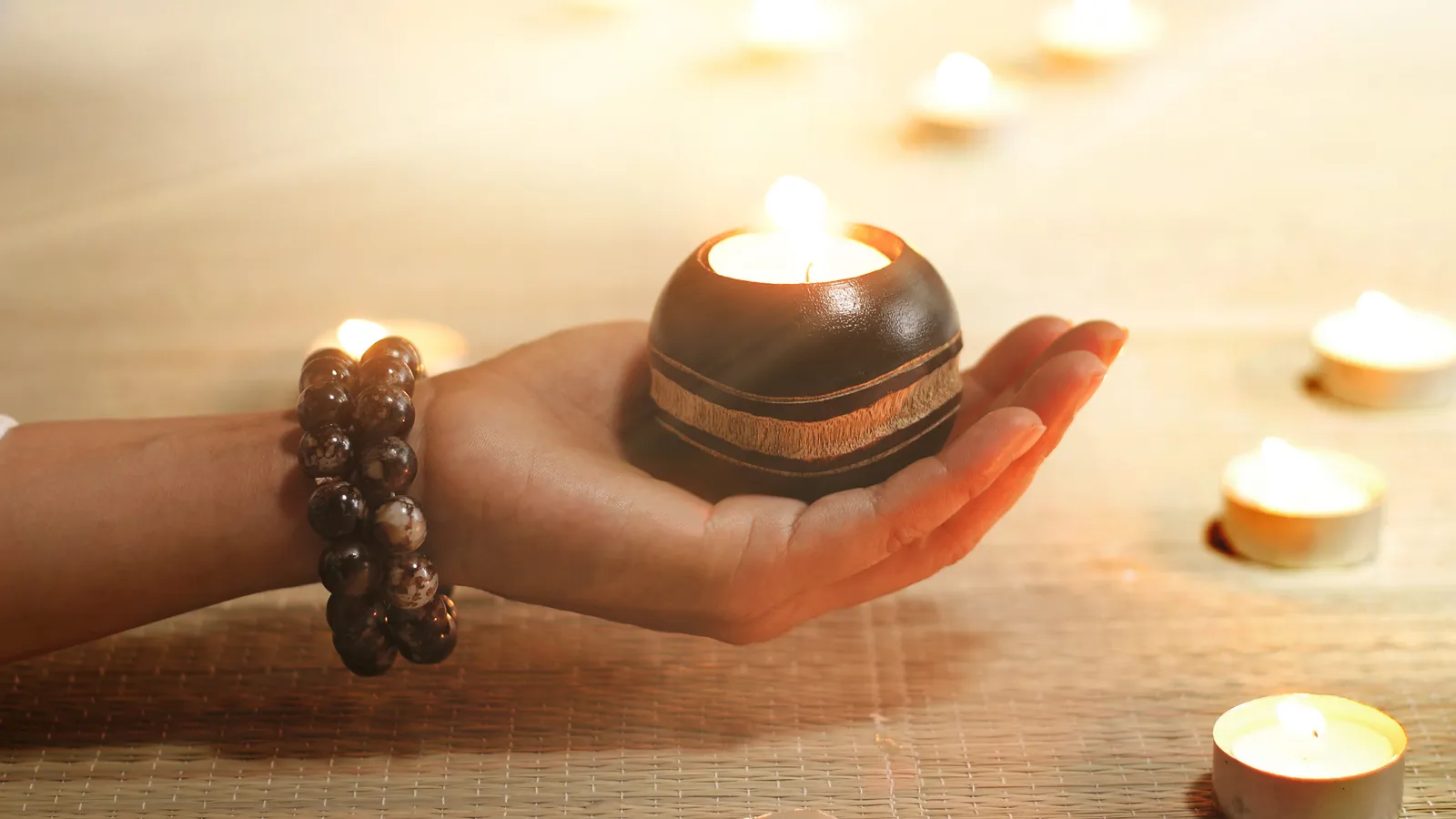
A Beginner’s Guide to Casting Your Own Spells at Home
Engaging in simple actions like making a wish over birthday candles, tossing a lucky penny into a fountain, or doodling a crush’s name on paper may seem ordinary, but they all share roots in the ancient tradition of spellcraft.
Throughout history and across cultures, humans have tapped into their innate magic through various manifestation techniques. In 1533, Heinrich Cornelius Agrippa of Nettersheim penned “Three Books of Occult Philosophy” (De occulta philosophia), a seminal work exploring different avenues of esotericism. Agrippa delineated three primary forms of magical practices: ceremonial, celestial, and natural.
Ceremonial magic, steeped in ancient traditions, requires the presence of a respected authority figure such as a priest, priestess, or shaman. Celestial magic delves into the intersection of earthly and cosmic forces, often exemplified by practices like astrology. Natural magic, on the other hand, utilizes the energy of herbs, candles, crystals, and stones to enhance spellcasting.
But what exactly is spellwork? How does one direct energy, and where does one begin? Fear not, as spellcraft welcomes all. Here’s what beginners should understand when embarking on a magical journey, along with some metaphysical supplies tips for nurturing your practice at home.
What Is Spellwork?
The notion of a vital life force has been explored globally, known as qi in traditional Chinese medicine, prana in Hindu philosophy, and ka in ancient Egyptian religion. These terms signify the essence of existence, a potent current that imbues all natural entities.
In divination, spells stem from the idea that each person mirrors the universe’s vastness—our small world reflects the big one. Spellcraft involves understanding, controlling, and guiding personal energy. It doesn’t require following strict rules or having special status. While some use tools and ingredients, the key is your magical intent.
Crafting a spell involves recognizing, elevating, and guiding your energy.
A spell encompasses any action conducted with magical intent, while an incantation specifically denotes a spell formulated with words. Whether it’s tossing a coin, concocting an infusion, or generating a cone of power through rhythmic movement, chanting, or music, the crucial factor lies in your alignment with the endeavor. It’s important to grasp that objects and rituals merely serve as vessels for our intrinsic power; they do not possess inherent magic but aid in channeling our personal energy.
The Principles That Distinguish Different Types of Spells
The most effective spells stem from a clear purpose. It’s essential that your pursuit of a magical manifestation arises from a genuine desire or necessity. Your incantation may be prompted by an event, like a timely professional opportunity, or by an idea, such as a newfound interest in spellcraft. However, it’s advisable to avoid crafting spells under intense emotional turmoil. The outcome of your manifestations will always mirror your emotional state at the time of creation: If you infuse your spell with agitation, expect unpredictable results. To yield positive and meaningful outcomes, direct your magical energy with focus, discernment, and compassion.
Direct your magical energy with focus, discernment, and compassion.
Ultimately, spells function as bridges that unite beings through concepts. While there are countless ways to devise a spell, they can be categorized based on the manner in which entities are connected. These patterns of connection illustrate the various ways a spell can forge — or sever — a bond. Let’s explore some of the most common attributes of spells.
Correspondences
Correspondences serve as connections between the abstract and the tangible, established through the tools employed in spellcraft, the timing of casting, and more. For instance, each planet embodies distinct concepts or qualities: Mercury signifies communication, Venus embodies romance, and Mars represents determination. Similarly, each “traditional” planet, visible to the naked eye, is linked to a specific day of the week. For example, if crafting a love spell, Friday, associated with Venus, is considered auspicious.
While many correspondences have ancient roots, some are more modern. For instance, mirrors are now utilized as conduits for incantations, as seen in the “Bloody Mary” ritual. Numerous resources delve into these correspondences, ensuring there’s always a connection to match your interests or desired outcome.
Sympathy and Antipathy
When forces pull together, it’s called sympathy, and when they push apart, it’s antipathy. Sympathy means that things connected in one will come together in another—basically, “like attracts like.” A typical sympathy spell involves slowly bringing two candles that represent lovers closer until they touch. Then, they’re tied together with honeysuckle vine to ensure a happy partnership.
Another love spell entails carving the name and birthday (or astrological sign) of your romantic interest into a red seven-day candle, setting your intention aloud and confidently, and allowing the candle to burn completely. Observing the flame’s characteristics—whether it’s strong, dim, or flickering erratically—offers insights into the progress of your desired romance. Once the candle has burned out, the spell is concluded.
In contrast, antipathy spells repel forces. To permanently remove someone from your life, tightly bind a candle with twine or wire and place it in the freezer to “put them on ice.” Alternatively, you can send someone away indefinitely by writing their name on a piece of paper and mailing it to an undeliverable location, ensuring not to include your return address.
Contagion
When you present a loved one with a special charm, it can evolve into a symbol of your bond, embodying the closeness you share. Similarly, contagion spells operate on the principle of “once in contact, always in contact”: Entities previously connected will maintain a link in some form, even when physically apart.
Conducting contagious magic involves acquiring an item that once belonged to the target entity, such as a lock of hair, a piece of clothing, or even a used napkin. With an existing cosmic connection between the individual and the object, your magical intentions gain heightened potency through contagion.
Inversion
In cases where you perceive yourself as a target of psychic attacks, jinxes, or negative energies, inversion spells serve to bolster magical defenses. These spells operate akin to vaccines, administering small doses of symbolic toxins to stimulate spiritual antibodies and fortify resilience. Talismans like the evil eye or enchanted mirrors can be employed to deflect malevolent intentions back to the sender. Additionally, ingredients such as cayenne pepper, often found in banishing oils used for anointing candles (not for consumption), symbolize the opposing energy of the entity targeted by the spell.
Repetition
Repetition is key in magic, focusing your intent and building up energy. Whether it’s writing your crush’s name over and over, chanting a mantra, or regularly cleansing your home with a broom to ward off negativity, doing things repeatedly strengthens your magical connections, linking the physical and magical worlds. Rhymes are especially potent, leaving deep impressions. Using rhyming incantations can double the spell’s power by enhancing its impact.
How to Get Started Making Spells
Getting started with spellcraft can feel daunting, but don’t let that hold you back from beginning your journey. Remember, the key ingredient for effective spells is your magical intention, so there’s no need to invest in expensive “healing crystals.” Everyday items like sugar, cinnamon, black pepper, and cayenne pepper possess potent magical properties and can be used in various oils, potions, and infusions. Your kitchen pots can serve as cauldrons, and almost any candle can be transformed into a magical tool (although a “Bahama Breeze” Yankee Candle might not be the ideal choice).
It’s crucial to understand that once you imbue an object with enchantment, it retains its magical essence indefinitely. For instance, a wine glass designated for potion-making shouldn’t double as a vessel for entertaining guests, unless entertaining guests aligns with your magical intention. Remember to keep track of your mystical tools, as they hold energetic imprints.
When selecting a location for your spellcasting, consider that physical thresholds act as cosmic gateways. Doorways, window sills, and even cracks in the floor symbolize spaces between worlds and can serve as powerful focal points for spells. Casting your incantation at dawn, dusk, or during seasonal equinoxes can enhance its potency. Always ensure to formally close any opened doors to signal the completion of your spell, whether through a ritual or a simple farewell.
The cardinal rule of spellcraft is never to cast a spell with malicious intent or the desire to cause harm, either to yourself or others. Remember the law of threefold return, where the energy you project returns to you threefold. If uncertain about casting a particular spell, refrain from doing so. Your magical intentions shape your spirit, so always approach your craft with love and compassion.
Spellcraft is a journey filled with empowerment, mystery, and above all, enjoyment. Embrace it fully, cosmic warriors, and revel in the magic it brings into your life.



